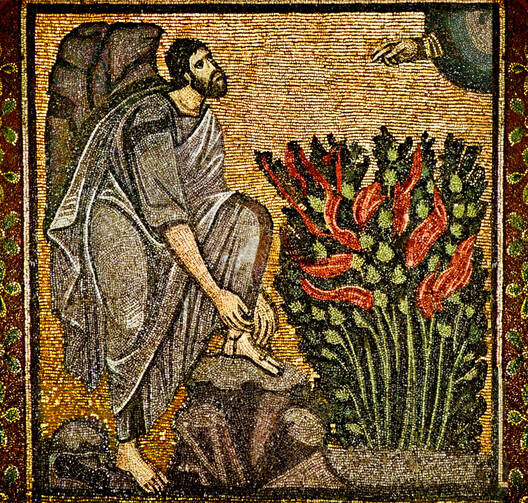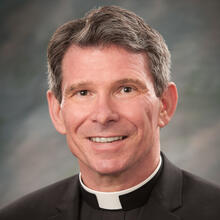Seven hundred and fifty-three years before the birth of Christ, on the 21st day of April, having killed his brother Remus, who preferred the Aventine Hill, Romulus yoked a bullock and a heifer to a plow and personally drew a deep furrow in the ground, marking, on the Palatine Hill, the sacred boundaries of his new city: Rome. His adherents followed closely behind the plow, insuring that any of the clods turned up by the harrow fell back within the sacred precinct.
The sacred zone would expand in the centuries that followed, but its significance never diminished. This was the pomerium, a place of peace. During the Republican period, Mars, the god of war, had no temple within the city. If a conquering general were allowed to parade through it, his soldiers none-the-less wore civilian dress, just as the Praetorian Guard served unarmed and in togas (they were called the cohors togata) within the sacred precinct.
Our word “holy” comes from the old English hālig, related to the German and Dutch heilig, carrying the sense of something “whole,” and therefore completely distinct from ourselves. God is holy in his very being. Religions are called holy because they grant us access to that which is utterly other and completely whole. To accomplish this, all religions separate the sacred from the profane.
The word “sacred” comes from a Latin root meaning, “cut off.” “Profane” is a combination of two words, the prefix pro, meaning in front of or outside, and fanum, which means temple. The profane, the non-sacred, was that which stood outside the sacred zone.
Something similar is recorded in Exodus. Moses is summoned into the presence of God and told:
Of course our Christian faith proclaims that Jesus is Emmanuel, God-with-us, the incarnate Son of the eternal Father. The central claim, therefore, of Christianity is that in the person of the Christ, God has sundered the barrier between the sacred and the profane. The earth itself, and our human nature, has become a dwelling place for the divine.
Previous to the Second Vatican Council, what Catholics call the “sanctuary” was demarcated from the rest of the assembly by a communion rail, which traces its origins back to the earliest construction of specifically Christian spaces. The Western communion rail is of a piece with the Eastern iconostasis—originally a curtain but eventually a screen—and the wall in medieval cathedrals, which separated the assembly from the sanctuary, called the rood screen.
That the assembly even entered the sacred dwelling is a distinctly Christian practice. An ordinary Greek or a Roman would no more have penetrated a temple than an ordinary Jew would have trod with the Temple’s most sacred precincts. But Christians were a plebs sancta, a holy people, a priesthood of believers who entered the sacred by right of baptism. They were the Body of Christ. What was once limited in the Incarnation was now spread throughout the world in a sacred assembly.
With the council, Catholicism also began to emphasize “the priesthood of believers” in its liturgical practice, without abandoning the thoroughly human need to separate the sacred and the profane. Even modern sanctuaries are marked by height or spatial distance from the assembly.
Is the separation purely functional or significant? Certainly in the first Christian structures it controlled the crowd, but it also helped humans to distinguish the sacred. God is of course free to break down the barrier between the sacred and profane whenever God likes. Humans are not, because we have an essential need for symbols. We communicate, we grasp our very selves, by way of signs.
When Leonard Bernstein composed his modern “Mass” (1971), a piece composed for “singers, players, and dancers,” he had the celebrant climatically throw the chalice to ground, dramatically signaling the demise, even the destruction, of the sacred in the modern world. It was great theater, but it could have no second act.
Shortly after the council, it was exciting to participate in home or dorm Masses, which eschewed most of the separation sewn into the liturgy. How exciting, how intimate it was to sit next to the priest on the rug! But what made sitting next to the priest thrilling was the intrusion into the sacred. In his person, the priest still insured the sacred, which so thrilled the parasites on the shag.
Baby Boomers take delight in tearing down walls. But how many walls can you tear down until the human world itself is flat, featureless and formless? And once it is, it no longer speaks to the human. It no longer allows us to share, by way of signification, in the divine. Prayer—liturgical or private—is not about the pursuit of feelings. It is the priestly privilege of attending, waiting upon the Lord.
God does not need to separate the sacred and the profane. We do. God doesn’t exist, or know himself, by way of signs or symbols. We do. When we tear down the sacred, we do not kill God. We strangle our humanity.
Exodus 3: 1-8a, 13-15 1 Corinthians 10: 1-6, 10-12 Luke 13: 1-9








